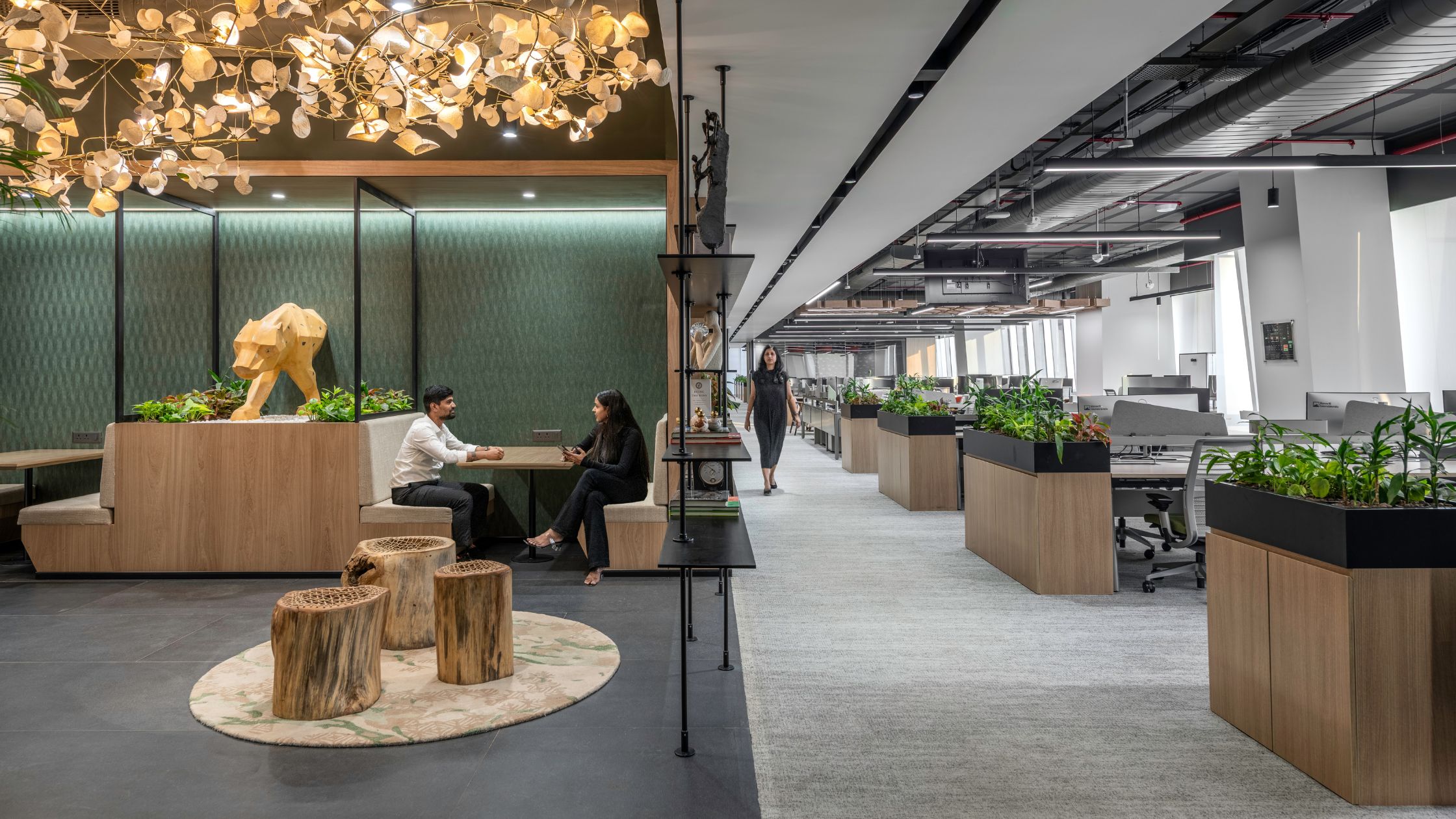The New Normal in corporate real estate: Managing the 3 major aspects of change
Densification, open plan spaces, buzzing corporate hubs — these are just some of the terms that differentiate a 2019 real estate strategy from one conceptualised in 2020.
There’s no doubt that the pandemic has changed the way companies and end users are looking at offices, and a lot of the ‘must-haves’ from last year are being completely revisited. However, despite remote and flexible work becoming a mainstream practice for most companies, the corporate office promises to remain relevant as a space to impart brand culture, ensure employee engagement, and offer inclusive choice environments to users.
But of course, since this workplace of the future looks very different from the one we were used to in the past, there are three major aspects of real estate strategy that need to be managed before the New Normal can be embraced.
The logistical aspect
Firstly, there are several logistical boxes to be checked as re-entry takes place. These include re-checking compliance with new health codes, building safety standards and security measures. For instance, CIBSE guidelines1 recommend that air recirculation within buildings be avoided and full ventilation be embraced. Likewise, CDC2 and OSHA3 also have similar recommendations for maintaining health and safety standards.
Technology and data driven strategies can enable you to implement these guidelines more efficiently. Smart sensors deployed through the building can help analyse occupancy and indoor traffic, thereby making it easier for you to identify zones that require extra cleaning and sanitation protocols. Smart HVAC units can monitor indoor air quality and adjust the ventilation and purification systems to function optimally based on constantly fluctuating occupancy (which will be a crucial part of the new normal, given the flexible work policies that most companies are looking to embrace).
Smart sensors and digital identification solutions can also help you offer better managed, safer spaces to employees, clients and customers. Providing contactless access through retina or face recognition technology can reduce touchpoints and shared surfaces, proving safer than manual or biometric systems. Installed optimally, digital scanning technology not only enables you to facilitate the mandatory temperature checks and health screening protocols, but also proves instrumental in carrying out contact tracing in case an infection is reported. Of course, all these systems and solutions will need to be backed by an extremely robust security system to prevent breaches that may possibly compromise employees’ and guests’ personal and biometric data.
The human aspect
A more nuanced consideration is the human aspect of corporate occupancy. The pandemic has made people hesitant about entering shared spaces, so many may prefer to continue working from home, even if it means sacrificing the much needed collaborative and social aspects of work. Pushing people back to the office is not a recommended approach in this scenario.
Earning trust then, becomes a crucial step in establishing the new normal. Of course, this will include visible, tangible steps like density management, heightened awareness and stepped up cleaning measures. But it is not enough to simply ensure that a space is safe and hygienic — the end user must also perceive it to be so. Communication and user engagement are extremely important. The health and safety protocols being adopted need to be communicated clearly and frequently to the end user in order to build trust and provide the necessary reassurances. It is also imperative to understand users’ needs and concerns, and continue updating your company’s safety strategies based on qualitative, real-time data. Quick turnaround is crucial here — employees and end users reporting flaws in the office design and potential cross contamination want to see that their feedback is being taken seriously. Too much time taken to translate such feedback into action can be misconstrued as nonchalance, which may end up eroding trust and loyalty.
Since fewer people will be using the space, optimised space planning measures will also need to be considered to drive cost efficiencies. But this means new opportunities — a space that caters to a fewer number of people at a time can be designed to offer extremely attractive and agile work environments. This, paired with adequate safety measures, can be just the right ‘pull tactic’ you need to convince employees to start using the corporate space again, both for collaborative and focussed work.
The continuity aspect
At a time when things are at a continuous flux, the ‘new normal’ considerations go hand in hand with the ‘next normal’. This involves managing risks and ensuring that your corporate space is future-ready.
One way to plan for the future is to ensure that the workplace itself is so dynamic and agile that it can easily be transformed to suit changing business requirements. Imagine a corporate space that can be repurposed as an experience zone, a sales office or a research space without needing massive overhauls each time. Using the right technology, again, is key to planning such adaptive spaces efficiently.
The pandemic has also highlighted the need for having a solid risk management strategy to stay ahead of future threats and crises — which as we know, can come with little or no lead time. It is thus a good idea to constantly monitor and analyse your policies and protocols — whether they are to do with remote working, space planning, health, security or sustainability. In a pandemic-driven world, the ESG (Environmental, Social and Governance) criteria a business has to follow is seeing a major overhaul — and the importance a company gives to its ESG policies has become an extremely significant measure of its ability to weather change and ensure business continuity. If you’d like to discuss how to prepare for this see change in the workplace, let’s connect.
1 https://www.cibse.org/coronavirus-covid-19/coronavirus-covid-19-and-hvac-systems
2https://www.cdc.gov/coronavirus/2019-ncov/community/guidance-business-response.html
3https://www.osha.gov/Publications/OSHA3990.pdf





